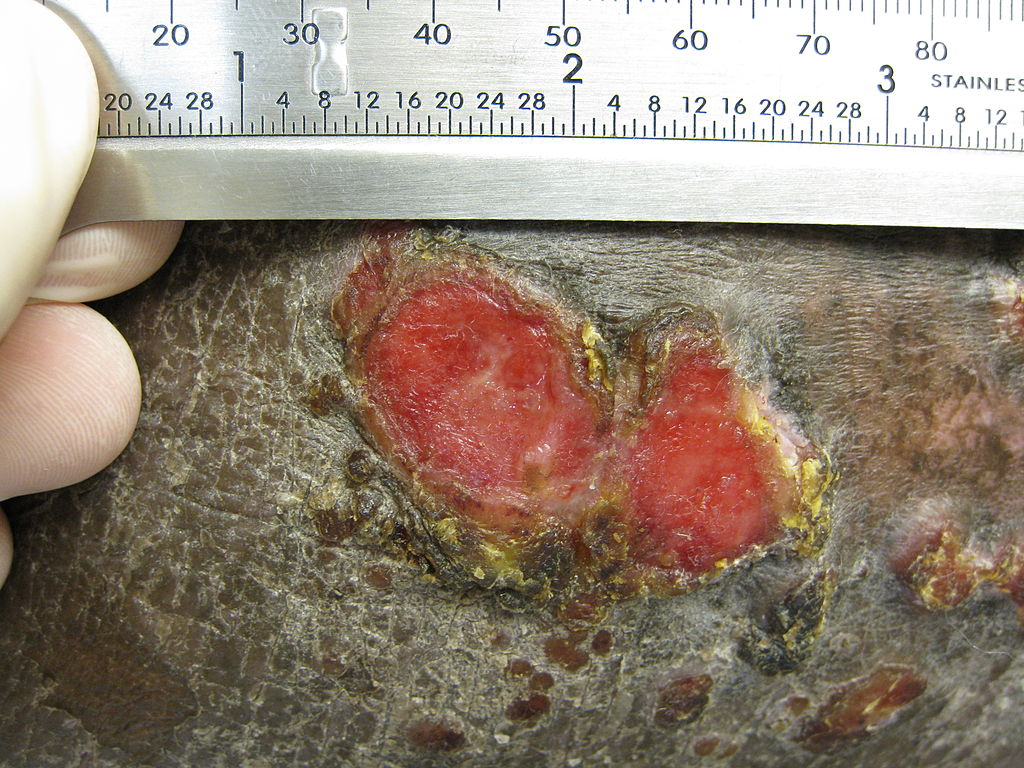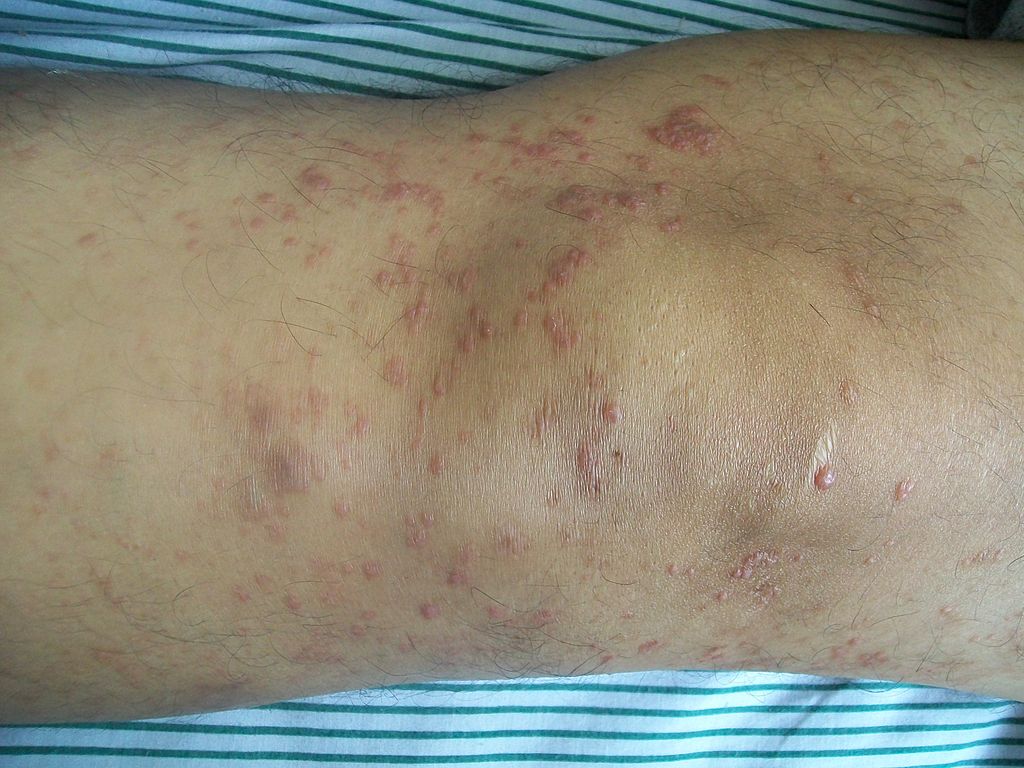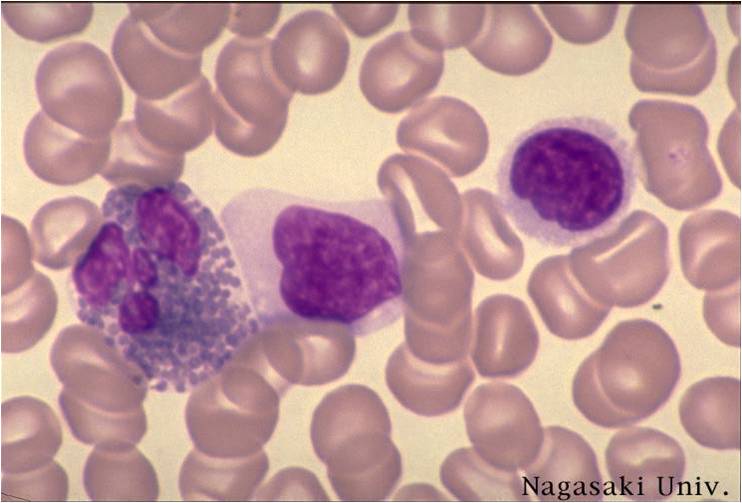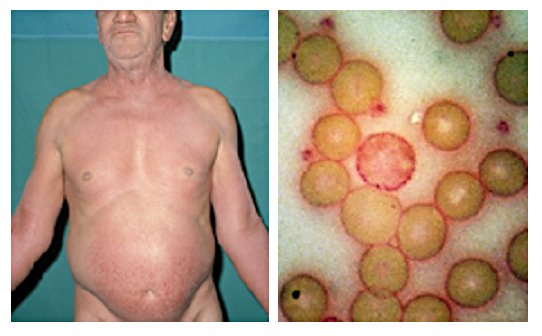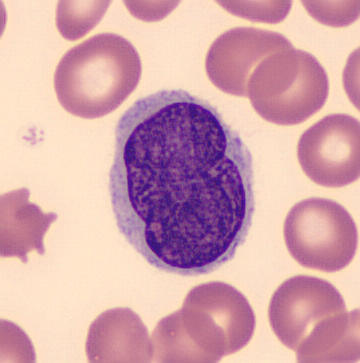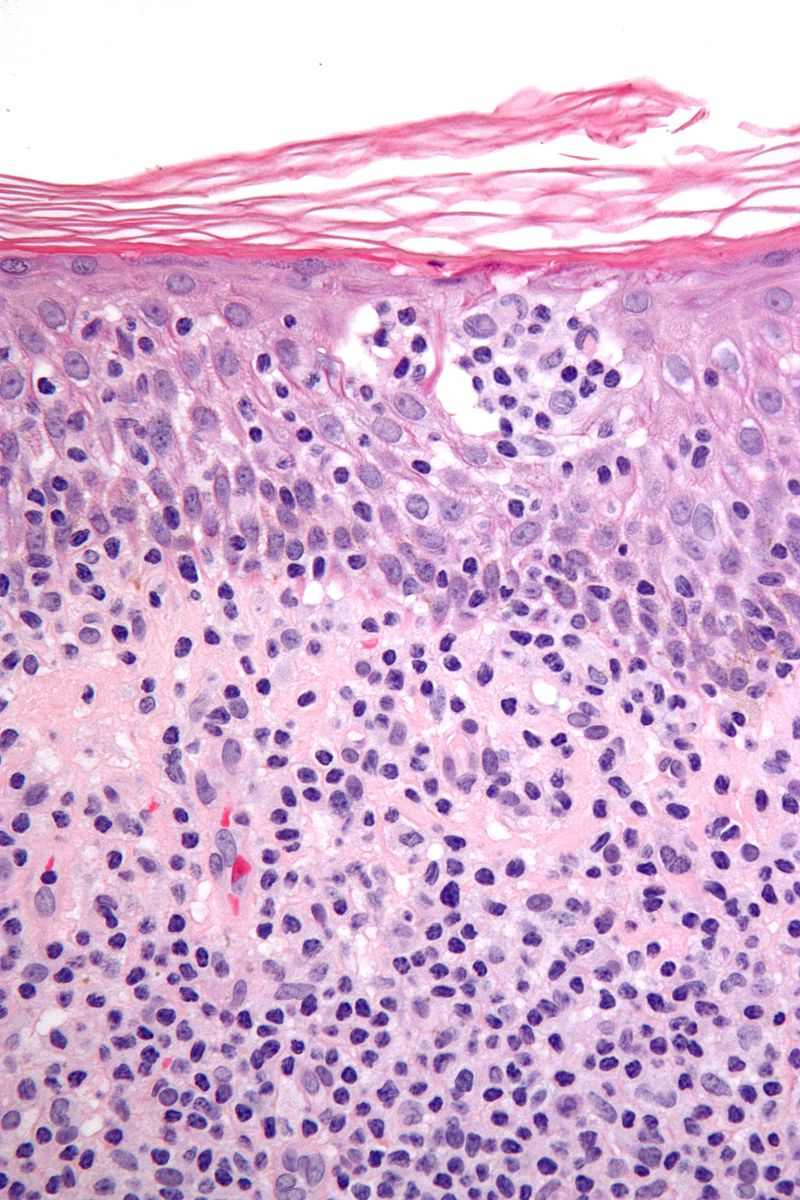Mycosis fungoides pathophysiology
|
Cutaneous T cell lymphoma Microchapters |
Editor-In-Chief: C. Michael Gibson, M.S., M.D. [1];Associate Editor(s)-in-Chief: Sogand Goudarzi, MD [2]
Overview
Cutaneous T cell lymphoma arises from T-cell lymphocytes, which are normally involved in the cell mediated immune response. On microscopic histopathological analysis, atypical lymphoid cells, polymorphous inflammatory infiltrate in the dermis, and lymphocytes with cerebroid nuclei are characteristic findings of mycosis fungoides.
Pathophysiology
- Cutaneous T cell lymphoma arises from T-cell lymphocytes, which are normally involved in the cell mediated immune response.
- Sezary syndrome and mycosis fungoides are T-cell lymphomas that primary manifest as multiple cutaneous lesions.
- Mycosis Fungoides is the most common type of cutaneous T cell lymphoma.
- Sézary's cells are T-cells that have pathological quantities of mucopolysaccharides.
- Sézary's disease is sometimes considered a late stage of mycosis fungoides.
Gross Pathology
- On gross pathology, irregular, erythematous, circular patches are characteristic findings of cutaneous T cell lymphoma.
-
Plaque of mycosis fungoides
-
Mycosis fungoides knee
Microscopic Pathology
- Mycosis fungoides pathological course may be divided into three main stages:
- Premycotic stage
- Mycotic stage
- Tumoros stage
- The premycotic stage
- Non-diagnostic and represented by chronic nonspecific dermatisis associated with psoriasiform changes in epidermis
- The mycotic stage
- Shows a polymorphous inflammatory infiltrate in the dermis that contains small numbers of frankly atypical lymphoid cells
- These cells may line up individually along the epidermal basal layer
- The presence of spongiosis is highly suggestive of mycosis fungoides
- Tumoros stage
- Expansion of the dermis due to dense infiltration by medium sized lymphocytes that are typically characterized by a cerebroid nuclei.
-
Sézary's disease
-
61-year-old man presented in 1972 with unrelenting pruritus of six months’ duration. On the right is his peripheral blood film stained with Periodic Acid-Schiff (PAS) showing a neoplastic T cell (Sézary cell).
-
Pleomorphic abnormal T cell with the characteristic cerebriform nuclei (Peripheral blood - MGG stain)
-
Features: Nests of lymphocytes in the epidermis; "Pautrier microabscesses". Single lymphocytes in epidermis; "lymphocyte exocytosis". Short linear arrays of lymphocytes along the basal layer of the epidermis; "epidermotropism".
Genetics
- Development of cutaneous T cell lymphoma is the result of multiple genetic mutations.[1][2][3][4][5]
OR
Genes involved in the pathogenesis of [disease name] include:
- [Gene1]
- [Gene2]
- [Gene3]
OR
The development of [disease name] is the result of multiple genetic mutations such as:[6][7][8]
- deletions and translocations in different chromosomes or chromosomal segments
- [Mutation 2]
- [Mutation 3]
References
- ↑ Shin, J.; Monti, S.; Aires, D. J.; Duvic, M.; Golub, T.; Jones, D. A.; Kupper, T. S. (2007). "Lesional gene expression profiling in cutaneous T-cell lymphoma reveals natural clusters associated with disease outcome". Blood. 110 (8): 3015–3027. doi:10.1182/blood-2006-12-061507. ISSN 0006-4971.
- ↑ Wong, Henry K.; Mishra, Anjali; Hake, Timothy; Porcu, Pierluigi (2011). "Evolving Insights in the Pathogenesis and Therapy of Cutaneous T-cell lymphoma (Mycosis Fungoides and Sezary Syndrome)". British Journal of Haematology. 155 (2): 150–166. doi:10.1111/j.1365-2141.2011.08852.x. ISSN 0007-1048.
- ↑ Wilcox, Ryan A. (2011). "Cutaneous T-cell lymphoma: 2011 update on diagnosis, risk-stratification, and management". American Journal of Hematology. 86 (11): 928–948. doi:10.1002/ajh.22139. ISSN 0361-8609.
- ↑ Whittaker, Sean (2006). "Biological Insights into the Pathogenesis of Cutaneous T-Cell Lymphomas (CTCL)". Seminars in Oncology. 33: 3–6. doi:10.1053/j.seminoncol.2005.12.015. ISSN 0093-7754.
- ↑ Henry K. Wong (2013). "Novel biomarkers, dysregulated epigenetics, and therapy in cutaneous T-cell lymphoma". Discovery medicine. 16 (87): 71–78. PMID 23998443. Unknown parameter
|month=ignored (help) - ↑ Leena Karenko, Sonja Hahtola, Suvi Paivinen, Ritva Karhu, Sanna Syrja, Marketta Kahkonen, Boguslaw Nedoszytko, Soili Kytola, Ying Zhou, Vesna Blazevic, Maria Pesonen, Hanna Nevala, Nina Nupponen, Harri Sihto, Inge Krebs, Annemarie Poustka, Jadwiga Roszkiewicz, Kalle Saksela, Part Peterson, Tapio Visakorpi & Annamari Ranki (2005). "Primary cutaneous T-cell lymphomas show a deletion or translocation affecting NAV3, the human UNC-53 homologue". Cancer research. 65 (18): 8101–8110. doi:10.1158/0008-5472.CAN-04-0366. PMID 16166283. Unknown parameter
|month=ignored (help) - ↑ Yaohua Zhang, Yang Wang, Richard Yu, Yuanshen Huang, Mingwan Su, Cheng Xiao, Magdalena Martinka, Jan P. Dutz, Xuejun Zhang, Zhizhong Zheng & Youwen Zhou (2012). "Molecular markers of early-stage mycosis fungoides". The Journal of investigative dermatology. 132 (6): 1698–1706. doi:10.1038/jid.2012.13. PMID 22377759. Unknown parameter
|month=ignored (help) - ↑ Alexander Ungewickell, Aparna Bhaduri, Eon Rios, Jason Reuter, Carolyn S. Lee, Angela Mah, Ashley Zehnder, Robert Ohgami, Shashikant Kulkarni, Randall Armstrong, Wen-Kai Weng, Dita Gratzinger, Mahkam Tavallaee, Alain Rook, Michael Snyder, Youn Kim & Paul A. Khavari (2015). "Genomic analysis of mycosis fungoides and Sezary syndrome identifies recurrent alterations in TNFR2". Nature genetics. 47 (9): 1056–1060. doi:10.1038/ng.3370. PMID 26258847. Unknown parameter
|month=ignored (help)
